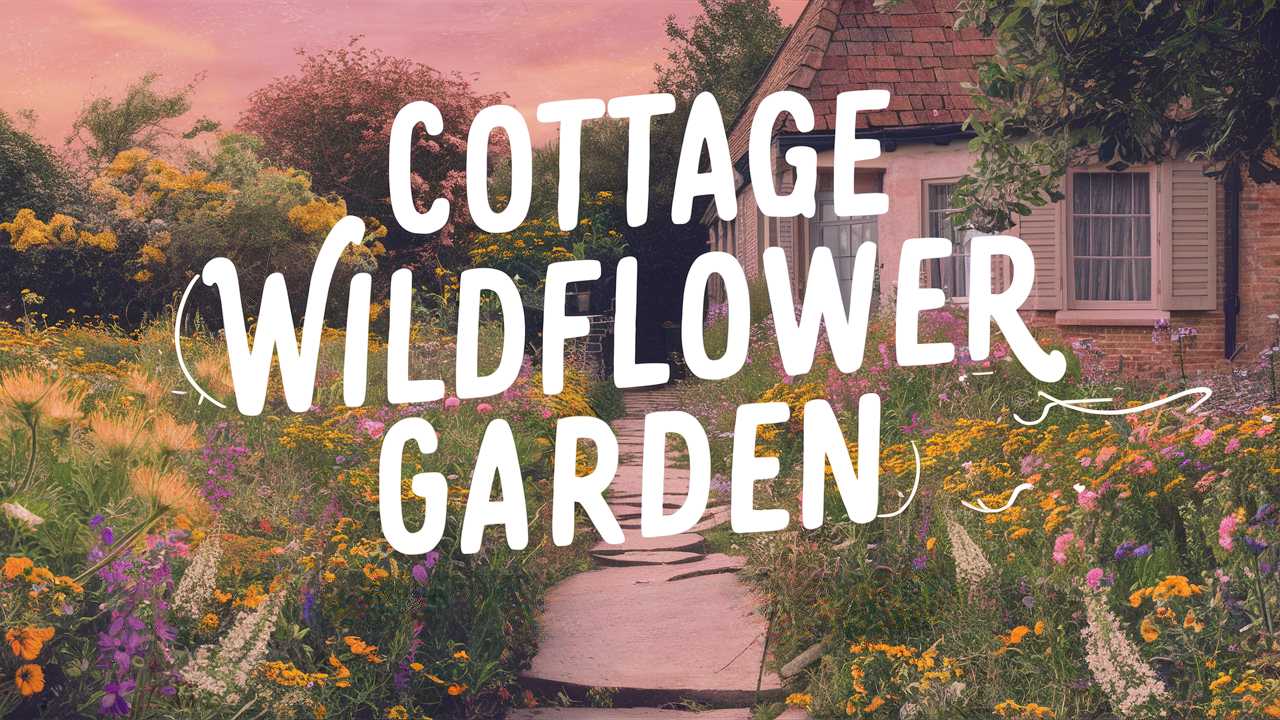In this guide, we will explore some delightful wildflowers perfect for a cottage garden, highlighting their unique characteristics and how they contribute to the overall charm of such an enchanting space.
Beardtongue
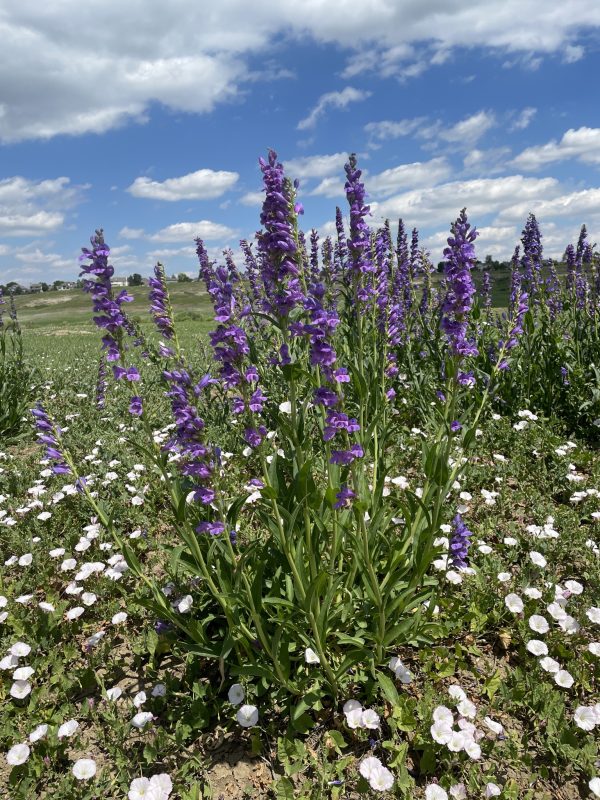
Beardtongue, or Penstemon, is a charming perennial that thrives in full sun and well-drained soil. This hardy flower features tubular blossoms that can be found in a variety of colors, from soft pastels to vibrant hues. What makes Beardtongue particularly appealing is its ability to attract pollinators, such as hummingbirds and bees, making it a dynamic addition to your cottage garden.
These flowers bloom in late spring to early summer, bringing vibrant life to your garden as they sway in the breeze. With their sturdy structure, they can tolerate poor soil conditions, which is perfect for the more natural look of a cottage garden. Pair them with fragrant herbs or taller flowers to create a layered effect that draws the eye and encourages exploration.
Sweet Peas
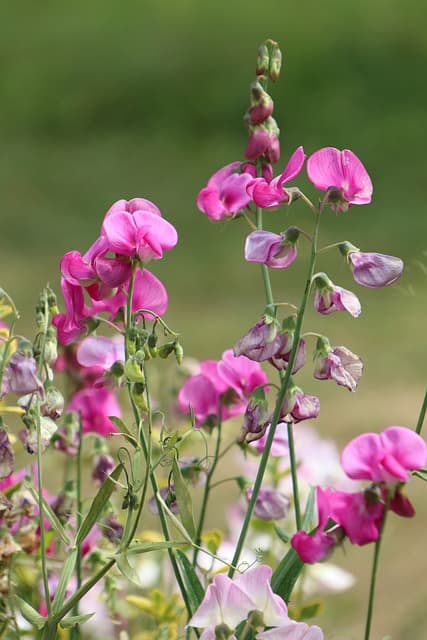
Sweet Peas, or Lathyrus odoratus, are the epitome of a cottage garden staple. Renowned for their delightful fragrance and delicate petals, they come in a rainbow of colors. The climbing nature of Sweet Peas makes them perfect for trellises, fences, or even cascading over garden walls, adding vertical interest to your space.
Gardeners commonly sow these seeds in the fall or early spring, allowing a stunning display from late spring through summer. Their sweet scent creates an inviting atmosphere where one can sit and enjoy a cup of tea among them. Pair Sweet Peas with taller plants to create an appealing visual hierarchy, while their climbing tendency will enhance the enchanting feel of a cottage garden.
Pansies
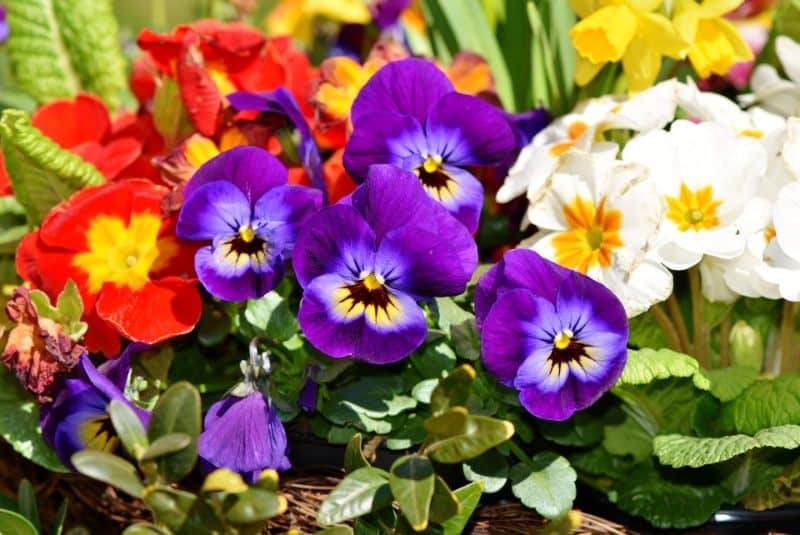
Pansies, with their cheerful faces and vibrant colors, are another classic choice for a cottage garden. Renowned for their ability to bloom in cooler temperatures, Pansies offer a burst of color in spring and fall, often serving as the first flowers to greet the changing seasons.
These plants have a charming way of spreading cheer and can be found in solid shades or multicolored varieties. They thrive in partially shaded areas, perfect for cottage gardens that might experience dappled sunlight from overhanging trees. Pansies can also be used for borders or as ground cover, bringing a patchwork of hues to your garden while inviting butterflies and bees to flutter about.
Butterfly Bush
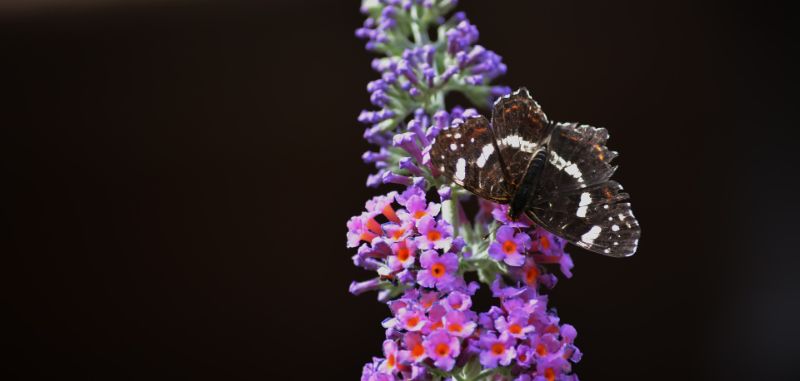
The Buddleja, commonly known as Butterfly Bush, is a magnet for pollinators and a glorious addition to any cottage garden. As the name suggests, this shrub attracts an impressive array of butterflies, bees, and other beneficial insects, making it a vital part of maintaining an ecosystem in your garden.
Butterfly Bush thrives in sunny areas and blooms from mid-summer to fall, producing long, spiky clusters of blooms in vibrant purples, pinks, and whites. The fragrant flowers provide food for butterflies, while the sturdy structure of the bush creates a backdrop for lighter, airier wildflowers to shine. In a cottage garden setting, Butterfly Bush creates a lush, inviting environment, where nature flourishes, and visitors feel connected to the wonder of the great outdoors.
Hydrangea

Hydrangeas are the stars of any cottage garden, known for their large, showy blooms and ability to flourish in both sun and partial shade. These perennials stand out with their globe-shaped flower heads, which can range in color from white to pink to blue, depending on the soil’s acidity.
As they bloom in summer, Hydrangeas become a focal point, adding elegance to a more rustic garden aesthetic. Their lush foliage fits seamlessly among wildflowers, creating a harmonious blend of textures and colors. Be sure to give them the space they need, as they can be quite expansive, making them a stunning backdrop for smaller wildflowers like Pansies and Catmint.
Iris
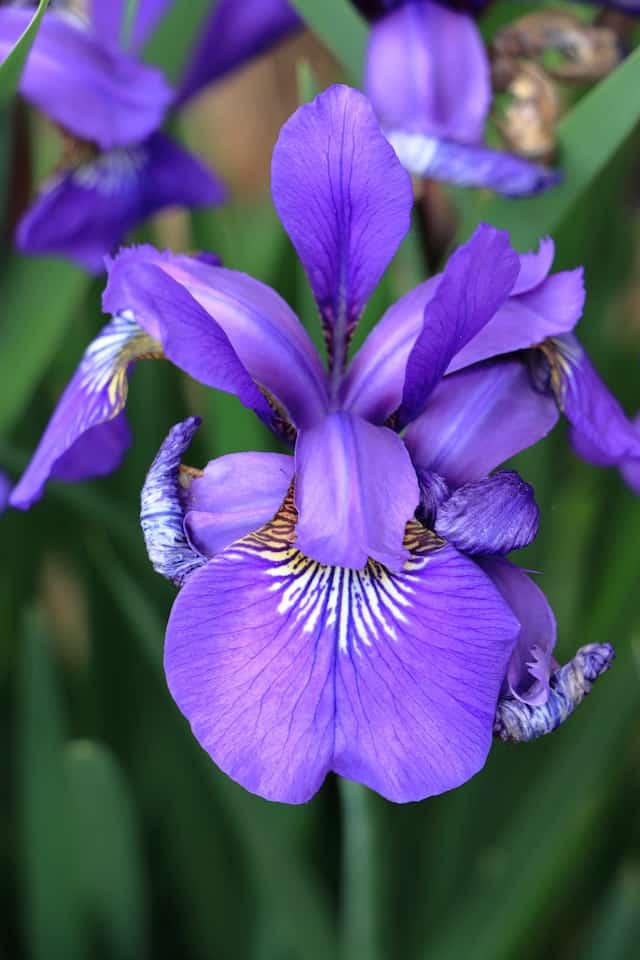
Iris, with their striking stance and alluring shapes, bring a sense of sophistication to cottage gardens. Available in a myriad of shades from deep, regal purples to soft yellows, these perennial beauties typically bloom in late spring.
Their sword-like leaves provide a bold contrast against softer foliage and delicate flowers, creating a visually engaging tapestry. Irises flourish in well-drained soil and can handle a variety of sunlight conditions, making them versatile companions for other wildflowers. When planted in clusters, they create a magnificent display, drawing the eye and setting the stage for newcomers to discover the wildflower enchantment of your cottage garden.
English Daisy
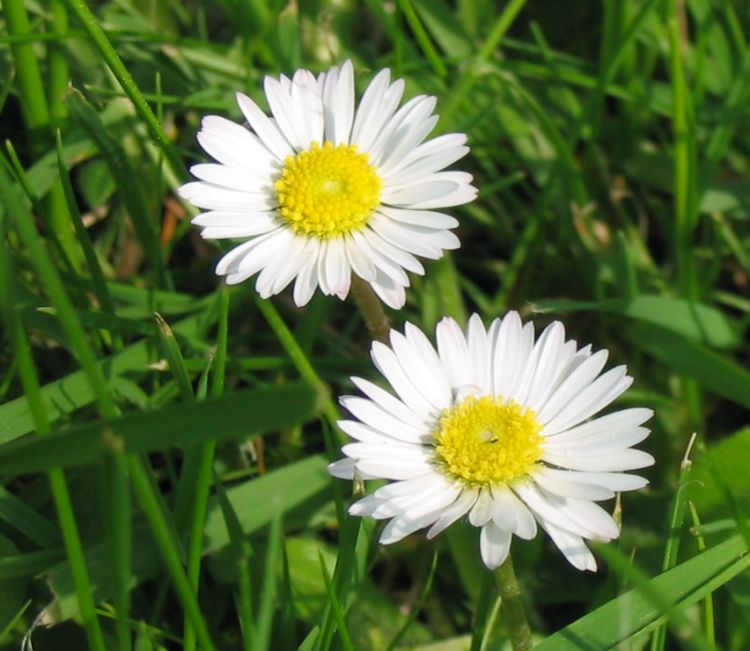
Cultivating Bellis perennis, commonly known as the English Daisy, introduces a touch of whimsy and nostalgia to your garden. These perennial flowers thrive in well-drained soil and prefer full sun to partial shade. Their simple, cup-shaped blooms in shades of white, pink, and yellow are perfect for creating a classic cottage garden ambiance.
The English Daisy blooms from early spring to early summer and makes a delightful ground cover when planted in clusters. They are resilient and can even thrive in less-than-ideal conditions, encouraging the spirit of a carefree, effortless garden style. The presence of these daisies enhances the playful aesthetic of a cottage garden while attracting bees and other beneficial insects.
Foxglove
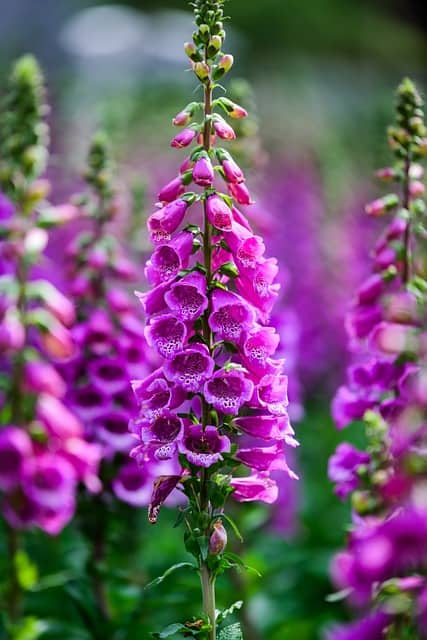
Foxglove, or Digitalis, is a show-stopping plant with tall spikes adorned with tubular flowers that can soar to impressive heights. Ranging in color from dusky pinks to yellows and whites, Foxglove creates an enchanting vertical element in cottage gardens. It thrives in partial shade and well-drained soil, making it perfect for those shadier spots.
Blooming in mid-summer, Foxglove attracts hummingbirds and serves as a vital source of nectar. Its tall stature can provide a stunning visual contrast to shorter flowering plants, creating a sense of movement throughout the garden. Planting Foxgloves in clusters allows their captivating nature to shine, captivating the attention of garden visitors and instilling a sense of wonder.
Delphinium
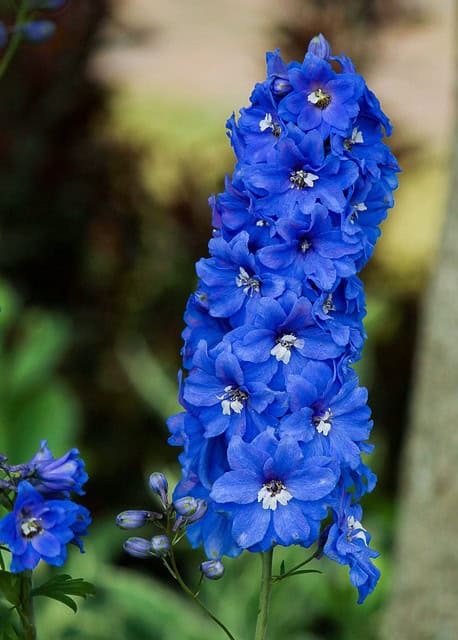
Delphiniums add height, drama, and a palette of vibrant colors to the cottage garden. Their tall stalks adorned with delicate flowers come in various shades, including blues, purples, and whites, providing continuity with other wildflowers.
These perennials require full sun and fertile, well-drained soil, thriving in borders where they can showcase their grandeur. Delphiniums bloom in early to late summer, serving as an elegant backdrop for low-growing flowers like Sweet Peas or Pansies. Not only do they create an enchanting spectacle, but they also attract beneficial pollinators, further enhancing the ecosystem of your cottage garden.
Phlox
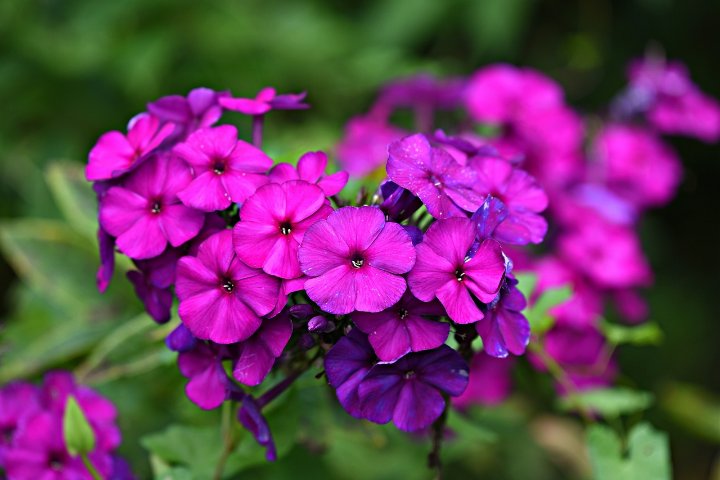
Phlox, with its fragrant and vibrant clusters, is central to achieving a cottage garden’s inviting appeal. Offering a delicate mix of colors—including pink, white, and purple—these perennials bloom from late spring to fall, delivering a continuous show of color throughout the warmer months.
Phlox thrives in sunny locations but can tolerate some shade, making them flexible companions for a diverse garden. Their fragrance adds to the sensory experience, inviting bees and butterflies to mingle within their lovely blooms. Use taller varieties as anchors in your garden beds along with shorter plants to create visually captivating layers, enhancing the enchantment and warmth of your cottage garden.
Catmint
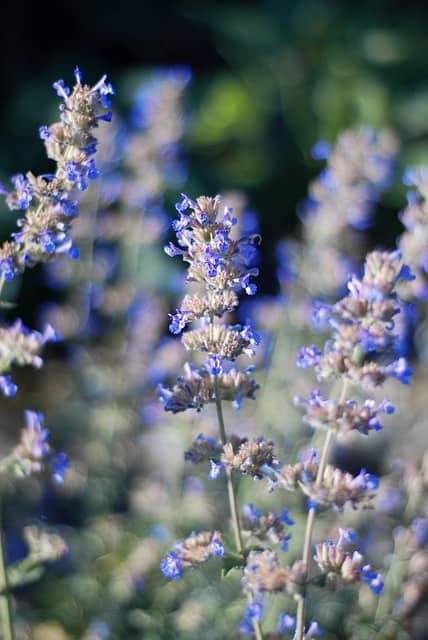
Catmint, or Nepeta, is the perfect herbaceous perennial for the relaxed, whimsical vibe of a cottage garden. With its soft, frosty foliage and enchanting lavender-blue flowers, it offers a stunning contrast to bolder plants.
This hardy flower thrives in full sun and well-drained soil, requiring little maintenance once established. Catmint also attracts pollinators, especially bees, and is known for its resistance to drought, making it an environmentally friendly choice for your garden. It spreads readily, allowing it to fill in gaps and soften borders, adding to the lush aesthetic of a cottage garden while maintaining low upkeep.
Ammi

Ammi majus, often referred to as Queen Anne’s Lace, introduces a delicate lacy texture to your cottage garden. This biennial plant produces clusters of white flowers that resemble small lace doilies, creating an ethereal appearance.
These elegant plants bloom in late spring and summer, thriving in full sun and well-draining soil. Their airy structure makes them a great complement to denser flowers, enhancing the overall visual layers of your garden. Not only do Ammi flowers attract beneficial insects, but they also lend a soft, romantic feel, encouraging a sense of tranquility as one strolls through the garden.
Hollyhock
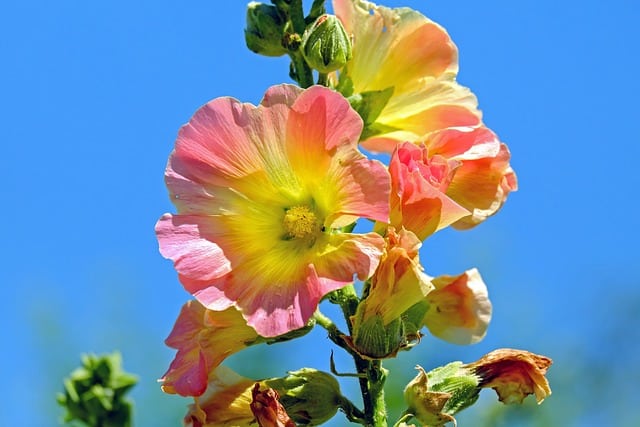
Hollyhocks are nostalgic garden favorites with tall, stately blooms that can reach impressive heights. Available in a variety of colors, their blooms add a touch of old-world charm that perfectly encapsulates the spirit of cottage gardens.
These biennials prefer full sun and well-drained soil but can thrive in various conditions. They commonly bloom from mid-summer to fall, creating vertical interest and beauty within the garden. Plant them in groups near fences or walls to showcase their height while providing a perfect backdrop for shorter wildflowers. Their romantic allure invites visitors to stroll leisurely through the garden while instilling a sense of nostalgia and wonder.
Perennial Herb
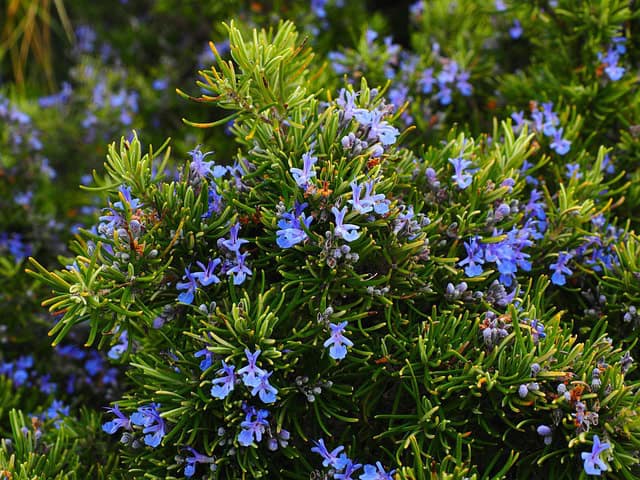
Incorporating perennial herbs into your cottage garden design can provide both practicality and beauty. Herbs like thyme, rosemary, and oregano lend culinary benefits while enhancing the sensory experience with their aromatic foliage.
By planting these herbs amidst your wildflowers, you can create a fragrant, delightful area reminiscent of cottage gardens across the ages. Herbs thrive in various conditions but generally prefer well-drained soil and plenty of sunlight. Their unique textures and earthy scents can beautifully complement the softer flowers, creating a garden that engages all the senses.
Rose
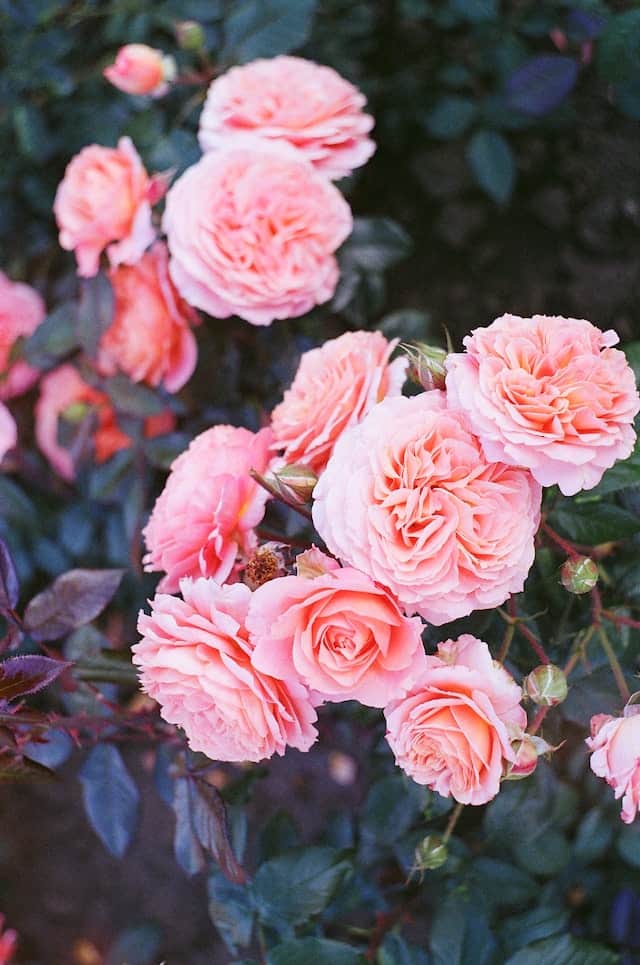
The timeless allure of roses must not be overlooked when creating a cottage garden. From climbing varieties that grace walls and trellises to low bush types that fill your flower beds, roses are synonymous with romance and beauty.
Roses require well-drained soil, abundant sunlight, and regular care, but their colorful blossoms yield memorable rewards. Blending different varieties can create a harmonious tapestry showcasing multiple shades and sizes, enhancing the overall enchantment of your cottage garden. Incorporating roses among other wildflowers assures a stunning mixture of textures, colors, and fragrances, inviting lingering moments in your floral paradise.
Hardy Geranium
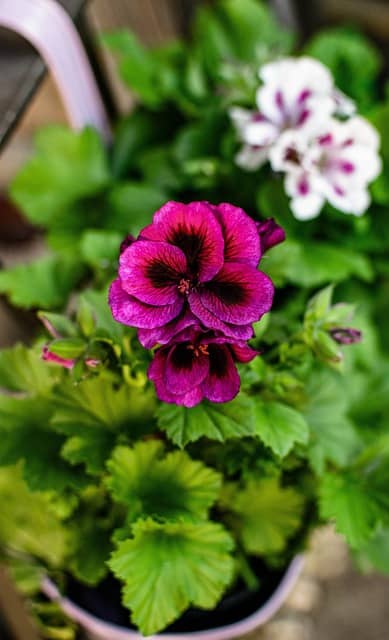
Geraniums, particularly hardy varieties like Geranium x cantabrigiense, add a touch of resilience and ease to cottage gardens. With their tiered, lush foliage and delicate blooms that appear in early summer, these charming perennials make for splendid ground cover or edging plants.
Hardy Geraniums thrive in various soil types and sunny to partially shaded locations, making them an adaptable choice for any garden. Their blooms can range from soft pinks to rich purple, creating a gentle, inviting ambiance. When combined with taller flowers such as Delphinium or Peony, Hardy Geraniums help accentuate the layered textural qualities that define a lovely cottage garden.
Four O’Clock
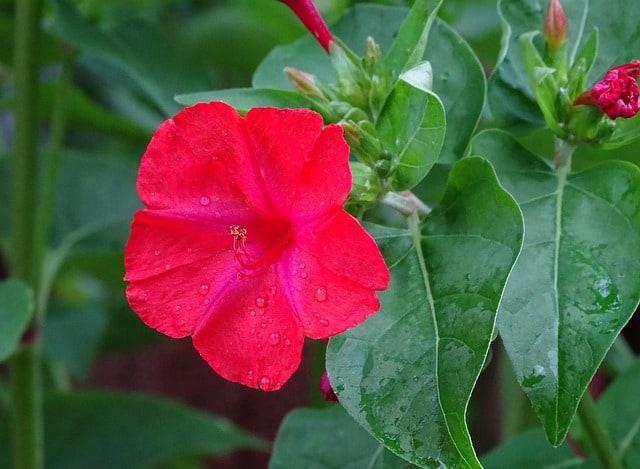
Mirabilis jalapa, also known as Four O’Clock, is a fascinating addition to your cottage garden. These perennial flowers bloom in a range of vibrant colors and have the unique feature of opening in the late afternoon, hence their name.
Four O’Clock flowers are wonderfully fragrant and are known for attracting pollinators. They thrive in full sun and are generally drought-tolerant, making them a low-maintenance option for gardeners. Their charming blooms add visual interest while their evening fragrance invites evening strolls through the garden, creating an enchanting atmosphere ideal for relaxation.
Peony
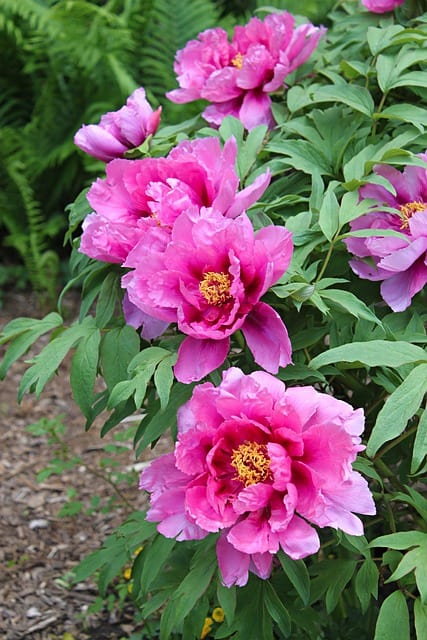
Peonies bring a lush and romantic feel to any cottage garden with their extravagant, cup-shaped blooms that usually appear in late spring to early summer. Available in various hues, including soft pink, deep red, and pristine white, Peonies are beloved for their intoxicating fragrance and rich texture.
While these perennials thrive best in full sun and well-drained soil, their size and beauty make them excellent focal points, drawing the eye among a tapestry of wildflowers. Peonies also provide a lush ambiance, inspiring feelings of nostalgia and beauty that align perfectly with the intention of a cottage garden.
Lavender
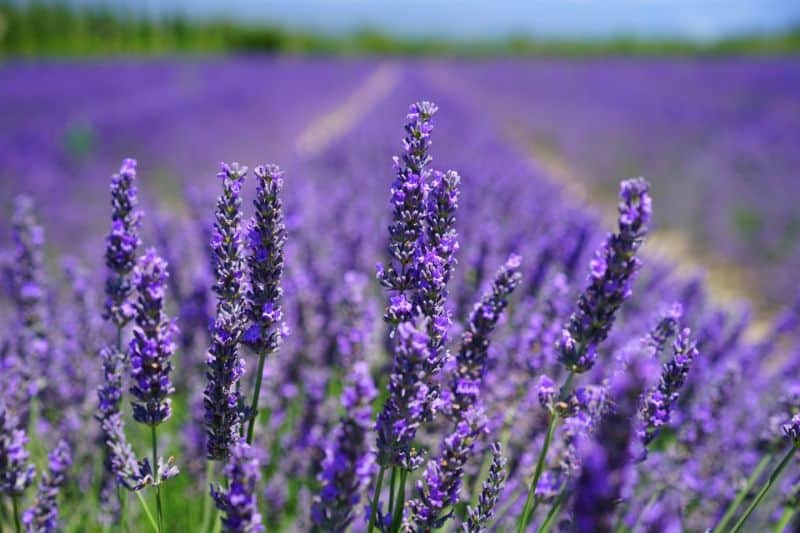
Lavandula, or lavender, is the quintessential herb for a cottage garden, evoking images of rustic charm and tranquility. With its aromatic foliage and vibrant purple blooms, lavender attracts bees and butterflies, creating a lively atmosphere filled with the scents of summer.
Lavender thrives in well-drained soil and plenty of sunlight, making it a hardy addition that requires minimal upkeep. The delicate stems of lavender can create a beautiful contrast when placed alongside larger blooms or softer wildflowers. When harvested, lavender can be used for culinary endeavors or as fragrant sachets, extending the joy it brings long after the garden has bloomed.
Love in a Mist

Lastly, Nigella damascena, commonly known as Love in a Mist, brings a whimsical touch to any cottage garden. This delicate annual features intricate, fern-like foliage that gives way to beautiful, star-shaped blooms. The petals can be seen in shades of blue, white, or pink, surrounded by a lacy halo of foliage, adding a playful touch to your wildflower arrangement.
Love in a Mist is easy to grow and thrives in full sun, making it perfect for brightening up any area of your garden. The character of this flower captures the very essence of a cottage garden—full of surprises and beauty, earning its name as an enchanting addition to your floral tapestry.


